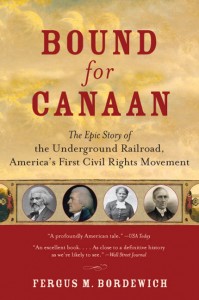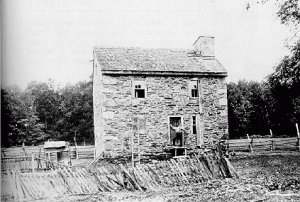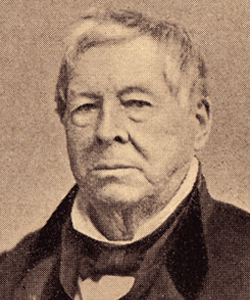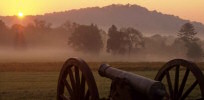 No activist of the Underground Railroad served longer or with more distinction than Levi Coffin. Coffin was raised in the Quaker enclave in Guilford County North Carolina, where in 1819-1820 he helped to organized the only documentable UGRR operation beyond the upper South. From then until about 1850, Quakers with the assistance of local African Americans, including at least one slave “Hamilton’s Saul” — who chose to remain enslaved in order to help others to freedom — dispatched fugitives overland with Quaker emigrants to Indiana. Coffin himself moved to Indiana in the 1820s, where he organized another efficient underground organization, which funneled “passengers” north toward Detroit. In the 1840s, Coffin moved again, to Ohio, where he built an effective UGRR in Cincinnati. In all, Coffin, who at the end of his life chronicled his is experiences in a book, his “Reminiscences”, estimated that he had assisted as many as 1,000 escaped slaves to freedom.
No activist of the Underground Railroad served longer or with more distinction than Levi Coffin. Coffin was raised in the Quaker enclave in Guilford County North Carolina, where in 1819-1820 he helped to organized the only documentable UGRR operation beyond the upper South. From then until about 1850, Quakers with the assistance of local African Americans, including at least one slave “Hamilton’s Saul” — who chose to remain enslaved in order to help others to freedom — dispatched fugitives overland with Quaker emigrants to Indiana. Coffin himself moved to Indiana in the 1820s, where he organized another efficient underground organization, which funneled “passengers” north toward Detroit. In the 1840s, Coffin moved again, to Ohio, where he built an effective UGRR in Cincinnati. In all, Coffin, who at the end of his life chronicled his is experiences in a book, his “Reminiscences”, estimated that he had assisted as many as 1,000 escaped slaves to freedom.
Another major Underground figure is David Ruggles, who was born free in Connecticut, and in the 1830s created the UGRR in New York City. Ruggles was a remarkably bold and confrontational man, who repeatedly challenged the authorities in a city where collaboration among slave hunters, police and the courts was tragically rife. Indeed, New York then was far from progressive in its politics, which generally were aligned with the slave-holding South, since the city’s economy depended significantly on Southern trade. The city was a slave hunter’s paradise, where recaptures were tragically common. Ruggles was himself targeted by slave hunters on at least one occasion, and barely escaped. He also received in his home the fugitive Frederick Bailey, whom he sheltered and dispatched to safety in New Bedford, MA: There Bailey changed his name and became the man we know as Frederick Douglass.
George de Baptiste, like Ruggles, embodied the bold personality and deft political skills that characterized many AFRICAN-American leaders of the UGRR. Born free in Virginia, trained as a valet and barber, he was also a successful member of the black middle class of his time. He eventually settled in Madison, IN, where in the 1840s he helped organize an all black UGRR operation which reached into Kentucky, and assisted fugitives northward until it was penetrated and destroyed by pro-slavery agents in the late 1840s. de Baptiste escaped to Detroit, where he helped create the mosty efficient UGRR operation west of the Appalachians.













